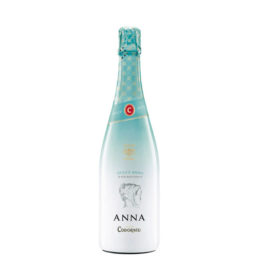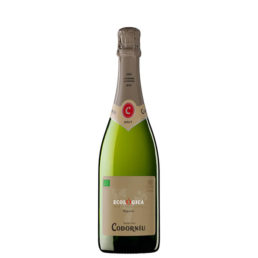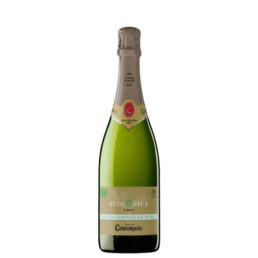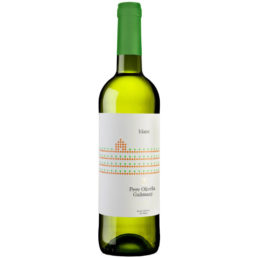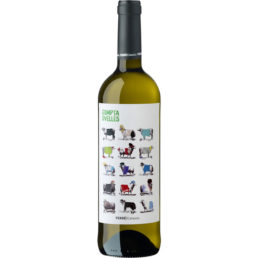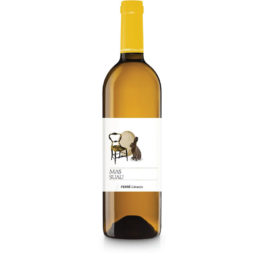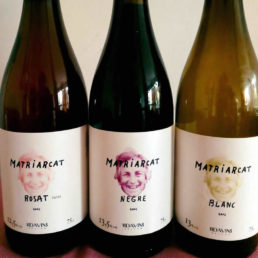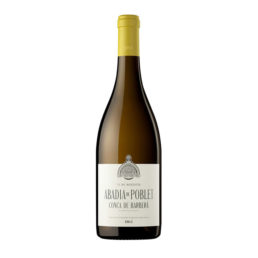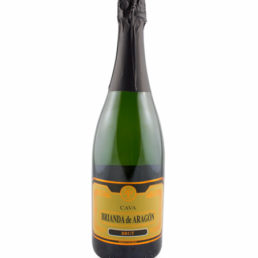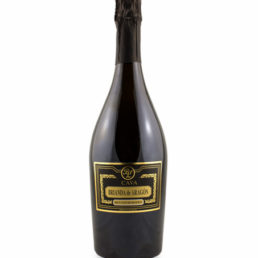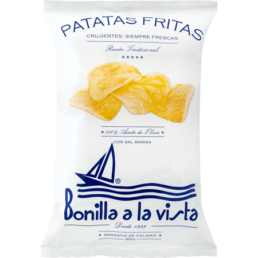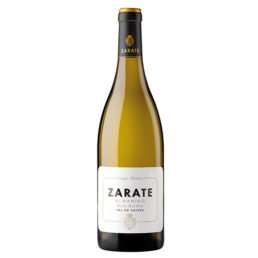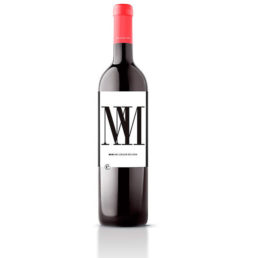Macabeo
Showing all 11 resultsSorted by latest
-
White wine Finca Fontanals – Finca Fontanals
Elaboration:Winemaking equipment: Stainless steel / WoodRearing period: 4 monthsAge of the barrels: NewWood type: OakProduction: 500 bottles -
Cava Codorníu – Sweet Anna of Codorníu
Sweet Anna cava is a fresh and versatile. A champagne made primarily with Chardonnay, to complete your blend with the traditional varieties of Macabeo, Xarello and Parellada. The result is a cava fresh and soft on the palate, full of vitality.
Fantastic combination of fruity scents with the balance sweet in the mouth. The two phases taste, harmonize perfectly: the smell compliments the taste and reciprocally. On the nose it is appreciate fresh notes of fruits of spring and white flowers, memories of peaches and almond flowers. In the mouth provides a pleasant feeling of density, always keeping a great freshness and vitality.
-
Cava Codorníu – Codorníu Ecológica Brut
Codorníu Ecológica Brut, the authentic expression of the cava traditional. Elaborated with autochthonous varieties naturally grown, of the best organic vineyards in the Penedès. To prevent any contact of the grapes and musts environmental rest of our production we decided to pick these grapes on different days of the rest of our vintage. Vinified with the utmost care in a reserved area of our historic winery. Both oenological products used throughout the development process as the various stages carried out to guarantee the denomination of organic cava.DEVELOPMENT (VINIFICATION) To prevent any contact of the grapes and musts ecological with the rest of our production we decided to pick these grapes on different days of the rest of our vintage. The material used in the winery is separated from the rest and are labeled in a special way the fermentation tanks. Both oenological products used throughout the development process as the various stages carried out ensure the designation of ecological.VINEYARD (VITICULTURE)All the vineyards from which is born Codorníu Ecológica Brut have ECO certification (European Regulations) and NOP (National Organic Program, USA) and are located in the Alt Penedès (Parellada and Macabeo) and in the Central Penedès (Xarel lo). The low yields per hectare, guarantees the maximum quality of the grape (8.500-9.000 Kg/ha, the maximum allowed is 12.000 kg/ha).PAIRINGCodorníu Ecológica is a cava ideal to highlight the natural flavors of healthy cuisine and a little spicy (stir-fry wok, papillotes, roasted vegetable, fish grilled or steamed and white meats). -
Cava Codorníu – Codorníu Ecológica Zero
Codorníu Ecológica Zero it is a delicious sparkling wine without alcohol obtained by desalcoholización, elaborated with autochthonous varieties of natural crop, of the best organic vineyards in the Penedès.DEVELOPMENT (VINIFICATION)To avoid any contact with the grape and wine, and eco-friendly with the rest of our production, we decided to gather these grapes on different days of the rest of our harvest. Based on selected wines, the spirit of Codorníu Green Zero is removed carefully by using an innovative system of vacuum distillation and low temperature with respect to the wine, minimizing the loss of its characteristics. The material used in the cellar was separated from the rest, and barrels of fermentation were especially marked. Both oenological products used along the development process as the various stages that are carried out guarantee the designation of ecological.PAIRINGVINEYARD (VITICULTURE)All the vineyards from which is born Codorníu Ecológica Zero have ECO certification (European Regulations) and NOP (National Organic Program, USA) and are located in the Alt Penedès (Parellada and Macabeo) and in the Central Penedès (Xarel lo). The low yields per hectare, guarantees the maximum quality of the grape (8.500-9.000 Kg/ha, the maximum allowed is 12.000 kg/ha).Codorníu Ecológica Zero is not only a perfect toast, but a great accompaniment to snacks, seafood, salads with fruit or flowers, fish and vegetables, crudités or desserts. -
White wine Pere Olivella Galimany – White
The origin; vineyards of the finca's own farm Can Pere del Maset. We used the same trilogy of varieties that allow us to produce our sparkling wines of cava, the Maccabee, the Xarel • lo and Parellada. Viticulture dry, do not irrigate. Rational use and fully controlled from the copper and sulphur to try to minimize your use. We use sexual confusion to control Lobesia botrana (the european grapevine moth). Only use organic fertilizers. The harvest is performed in its optimal state of maturation phenolic, in the early morning hours, by the control of the temperature. Selection in the own vineyard, only the best grapes will be selected, harvesting by hand to ensure maximum quality of the grape.Elaboration:By gravity in the winery, derrapado and later crushed soft grape after gentle pressing of the paste at low pressures and alcoholic fermentation at a controlled temperature. There is No step by wood.Pairing:It is a wine that is very versatile, that allows for a varied selection of dishes and various cuisines. Highly recommend it but some dishes that we can harmonize perfectly with this wine, different starters like mussels steamed, the salads, rice or warm salad of seafood, sushi and sashimi, you can also accompany perfectly a grilled fish (a good sole) . -
White wine Ferré i Catasús – Compta Ovelles
“We are the difference, each one unique, we are the creative, the daring, the claim, we are your inner strength, your deepest desires, the personalities, we are Compta Ovelles of Ferré i Catasús” Compta Ovelles white is the sensitive representation of its origins, franco, and true to its roots with unmistakable tropical fruit, citrus notes and floral, persistent in the mouth, that puts us, if we close our eyes, in our land.Elaboration: Mechanized harvesting and night to preserve all the organoleptic qualities of the grape. Vinification of Ias varieties separately and temperature-controlled fermentation at 16° C. -
White wine Ferré i Catasús – Mas Suau
“I'm from here, this is my land, my farm, my animals, my life, I am a simple beauty, direct, I am soft, I am Mas Suau de Ferré i Catasús. ”Mas Suau is the promise of a pleasant moment, a moment of each day, whatever the occasion, to enjoy a glass of wine.Elaboration: Mechanized harvesting and night to preserve all the organoleptic qualities of the grape. Vinification of each variety separately and fermentation at a controlled temperature to 16 ° C.Pairing:It is a young wine aromatic to take in the appetizer, with any fish or seafood, and also with cheeses and white meats. -
Vino blanco Vidavins Matriarcat
White wine elaborated with grapes of the varieties Macabeu and Monastrell, the winery Vidavins located in the region of Pallars Jussà, Figuerola d Orcau (Lleida). -
Cava Brianda de Aragon Brut
Cava Brianda de Aragon Brut
Vinification After a first fermentation and bottling, a second alcoholic fermentation in the bottle, called retractions. Here, the base wine is mixed with yeast that help to consume the sugar and causes the fermentation. Then, the bottles are carried to the underground cellars to its period of ageing in contact with lees of the yeasts for a minimum of 15 months, making it a cava reserva.During that time occurs the removal, in the sediment of the yeast is transferred to the neck of the bottle. Later, it carries out the degüello, removing the sediment from the neck of the bottle with the minimum loss of sparkling wine. Finally, is made the corking the cava, by adding the liquor of expedition, a mixture of old wine, and other compounds that are allowed by the Appellation of Origin, what will compensate for the loss of liquid occurred in the disgorgement. -
Cava Brianda de Aragon Brut Nature Reserva
Cava Brianda de Aragon Brut Nature Reserva
Vinification After a first fermentation and bottling, a second alcoholic fermentation in the bottle, called retractions. Here, the base wine is mixed with yeast that help to consume the sugar and causes the fermentation. Then, the bottles are carried to the underground cellars to its period of ageing in contact with lees of the yeasts for a minimum of 15 months, making it a cava reserva.During that time occurs the removal, in the sediment of the yeast is transferred to the neck of the bottle. Later, it carries out the degüello, removing the sediment from the neck of the bottle with the minimum loss of sparkling wine. Finally, is made the corking the cava, by adding the liquor of expedition, a mixture of old wine, and other compounds that are allowed by the Appellation of Origin, what will compensate for the loss of liquid occurred in the disgorgement.













